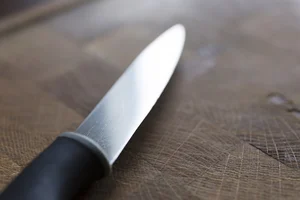
Most people don't often think about the differences between various steel products. Among the many types available, carbon steel and stainless steel stand out due to their distinct characteristics.
Stainless steel is widely used in food processing equipment, surgical instruments, automotive components, and countless other applications. Its key feature is its ability to resist oxidation and rust, unlike other iron-based metals. This makes it a popular choice for environments where hygiene and durability are critical.
With its corrosion resistance, sleek appearance, ease of maintenance, and impressive strength, stainless steel finds its way into numerous industries. Picture yourself walking through a bustling restaurant kitchen or a modern hospital—chances are, the surfaces you see are made from stainless steel.
 hbspt.cta._relativeUrls=true;hbspt.cta.load(5163497, '8dce98ee-223d-4c3d-ae39-749a256a8bb6', {"useNewLoader":"true","region":"na1"});
hbspt.cta._relativeUrls=true;hbspt.cta.load(5163497, '8dce98ee-223d-4c3d-ae39-749a256a8bb6', {"useNewLoader":"true","region":"na1"});
Carbon steel, in contrast, has a duller finish and boasts higher tensile strength and hardness compared to stainless steel. It's commonly found in knives and tools designed to keep sharp edges over time. However, carbon steel is prone to rusting when exposed to moisture, even in minimal amounts. Additionally, it isn't as flexible or moldable as stainless steel.
Both carbon steel and stainless steel share the same basic composition of iron and carbon but differ in terms of alloying elements. Carbon steel typically contains less than 10.5% chromium, whereas stainless steel must contain at least 10.5% chromium to qualify as such.
Why Is Carbon Steel So Strong?
Carbon steel derives its toughness from its carbon content, which can reach up to 2.1% of the total weight of the metal. This carbon contributes significantly to the steel's enhanced strength. Small amounts of other elements may also be added to improve specific traits, like rust resistance, without sacrificing the overall strength of the alloy.
To ensure carbon steel retains its durable qualities, standards set by organizations like the American Iron and Steel Institute (AISI) limit the maximum percentages of additional materials. These include:
- Copper
- Manganese
- Silicon
Meanwhile, there are no minimum thresholds for corrosion-resistant additives such as:
- Chromium
- Cobalt
- Nickel
- Titanium
- Tungsten
- Vanadium
Applications of Carbon Steel
Due to its hardness and carbon content, carbon steel's usage depends largely on its carbon concentration. Low-carbon steel is often used for items like fencing or wrought ironwork. Medium-carbon steel plays a crucial role in large-scale construction projects like bridges and skyscrapers. High-carbon steel, on the other hand, is ideal for manufacturing steel wires and coils. Its robustness makes it perfect for cutting tools, saw blades, drill bits, knives, and similar equipment requiring durable edges.
 hbspt.cta._relativeUrls=true;hbspt.cta.load(5163497, '8dce98ee-223d-4c3d-ae39-749a256a8bb6', {"useNewLoader":"true","region":"na1"});
hbspt.cta._relativeUrls=true;hbspt.cta.load(5163497, '8dce98ee-223d-4c3d-ae39-749a256a8bb6', {"useNewLoader":"true","region":"na1"});

What Makes Stainless Steel Resistant to Rust?
Stainless steel resists rusting effectively thanks to its chromium content, which must be at least 10.5%. Chromium forms a protective layer that shields the steel from moisture exposure. Industries that involve water usage heavily rely on stainless steel for their machinery and infrastructure.
Stainless Steel in Piping Systems
The corrosion-resistant nature of stainless steel makes it a natural fit for piping systems across industries like petrochemicals, food processing, solar energy, and more. Its resilience and ease of upkeep ensure long-term performance.
Partnering with APP
For expert advice on piping systems and accessories, reach out to APP, a trusted provider specializing in these areas. Their team is ready to address any technical queries related to industrial piping designs and materials.
 hbspt.cta._relativeUrls=true;hbspt.cta.load(5163497, '7c3acf31-8ac7-48b6-9095-1fa70d90c2a7', {"useNewLoader":"true","region":"na1"});
hbspt.cta._relativeUrls=true;hbspt.cta.load(5163497, '7c3acf31-8ac7-48b6-9095-1fa70d90c2a7', {"useNewLoader":"true","region":"na1"});
Understanding the nuances between different types of steel can help businesses make informed decisions about their manufacturing needs. Whether it's choosing the right material for kitchenware or designing robust infrastructure, both carbon and stainless steel offer unique advantages tailored to specific purposes. By leveraging the strengths of each type, companies can optimize efficiency, safety, and longevity in their operations.
Silk Pouches,Silk Pouch Satin Gift Bag,Tassel Silk Pouch,Silk Cloth Pouch
Dongguan C.Y. RedApple Industrial Limited , https://www.hpgbags.com
